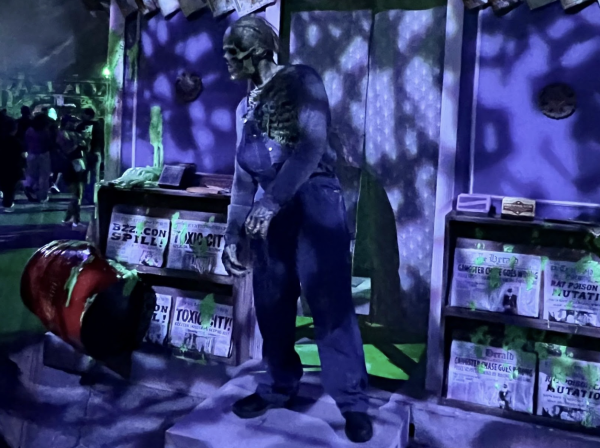Bringing a Voice to a Silent Illness
While not often talked about, mental illnesses have become much more common during the COVID-19 pandemic.
April 9, 2021
In the year 2020, a silent illness spread throughout one country, and then the entire world. It caused millions of businesses, schools, and companies to go dark. This silent illness changed the lives of so many people. However, it united the same people to come together to stop it. Several months later, a vaccine came out to help control the spread. The world was working together to implement a way to stop this silent pandemic.This killer, you probably figured out by now, is COVID-19. However, what if there was another silent illness that is still out there lurking around, impacting millions of people around the world at this very second?ô
Mental illness is something that is often not talked about. Many people feel ashamed to be diagnosed, and hide it from others. However, it is something that cannot be hidden from the world. According to the American Pediatric Association, ãMental illnesses are health conditions involving changes in emotion, thinking or behavior (or a combination of these). Mental illnesses are associated with distress and/or problems functioning in social, work or family activities.ãô Many friends, family or peers probably have or know someone with a mental illness. Even though it is labeled an illness, it doesn’t mean there is something severely wrong with those who experience them and that they should be ashamed. In reality, it is something that needs to be shared more often in order to gain help and support from others.
Especially during COVID-19, the amount of children and teenagers with mental illness has increased. This could be due to the isolation, the drastic change in people’s daily life, or the worries about the virus. Even before COVID, children still had these same worries. AAFP stated that, ãA recent analysis of 2016 National Survey of Children’s Health data published online in JAMA Pediatrics indicated that as many as one in six U.S. children between the ages of 6 and 17 has a treatable mental health disorder such as depression, anxiety problems or attention deficit/hyperactivity disorder (ADHD).ãô ô
In children, anxiety is one of the most common mental illnesses. Anxiety can affect the way you think and can also increase the risk of OCD or depression. Something as simple as taking a test could cause a child to start having anxiety. However, anxiety has become a statement and no longer an illness. Often, people will just tell you to toughen up or to just stop worrying. If more people were educated on the symptoms and coping strategies of anxiety, people would realize it is not that easy to just take a breather and stop worrying. The key lesson is do not be ashamed. Even if people don’t take it seriously, it is very real. It doesn’t matter if you have worries that are small or if your anxiety becomes debilitating: find someone to talk to and don’t hide it from the world.ô
Mental illness will not have a vaccine to control it and it will not just go away over time. As students who are part of a large community, we have a responsibility to make sure that mental illness is addressed. Just like we wear masks to stop the spread of COVID-19, discussing and accepting mental illness can make it feel more normal and provide support for those who experience them. It is not something that we can just forget and hope it goes away. Even if you do not suffer from anxiety, depression, ADHD or any other mental illness, you can still support someone who has. On the outside, this silent illness won’t give you a fever or a cough; however, on the inside, it can have a drastic effect on someone’s life.ô



















Anna • Apr 22, 2021 at 10:25 am
As someone who struggles with mental health themselves, I feel like this article sums up how I have felt. Please keep up the good work on difficult pieces like this.
Amy • Apr 14, 2021 at 10:00 pm
This is beautiful!! Thank you Samantha Gitlin for your thoughtful and engaging piece!